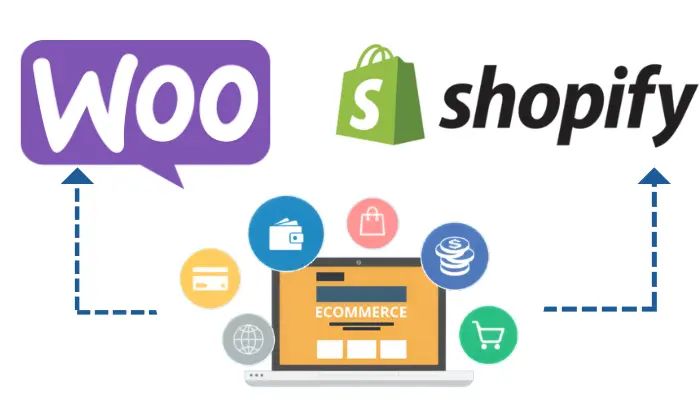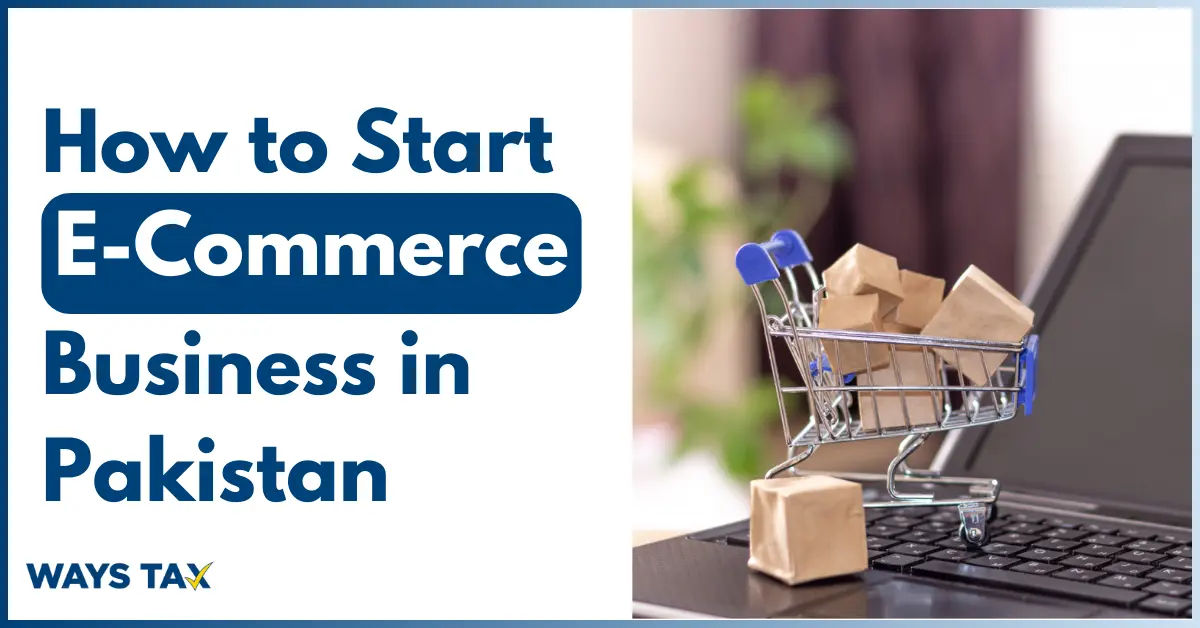How to Start E-commerce Business in Pakistan: Tips and Tricks
Starting a business needs a thorough process, and it’s important to stick to these steps to create a successful e-commerce business.
The opportunities in e-commerce in Pakistan are very huge. By introducing one winning product at a reasonable price and good quality, you can make a lot of money, particularly if customers give good reviews. A single carefully selected product can bring in decent profits.
These stats will give you the confidence to start e-commerce. According to ECDB, the eCommerce market in Pakistan was expected to make US$2,924.2 million by 2024, which is more than Sri Lanka.
We know a person who earned millions through selling only one product online. So, it depicts that with the right strategy and following specific steps, you can be a millionaire through e-commerce!
Let’s discuss the step-by-step process of how to start an e-commerce business in Pakistan.
Register Your Ecommerce Business with Waystax
Get expert help for registration, taxes, and legal compliance.

E-Commerce Models You Should Know
| E-commerce Model | Definition | Examples | Description |
| B2B (Business to Business) | When one business sells goods or services to another business. | D2C (direct-to-consumer) | Commonly involves bulk or wholesale transactions, where companies deal with each other directly. |
| B2C (Business to Consumer) | When a business sells products or services directly to individual consumers. | Daraz, Telemart | Customers purchase items for personal use directly from the business. Examples include online stores and subscription services. |
| Types of B2C Models | |||
| Direct-to-Consumer Retail | Selling products directly to consumers via online stores. | Example: Asim Jofa | No middlemen; the brand connects directly with customers. |
| Online Marketplace | A platform for various sellers to offer products to customers. | Daraz Marketplace | Multiple businesses can list and sell their products to consumers on one platform. |
| Subscription-Based eCommerce | Providing products or services on a recurring basis. | Netflix | Customers subscribe to receive products or services regularly. |
| Service-Oriented eCommerce | Offering online services. | Consulting, digital marketing | The business provides services directly to consumers through an online platform. |
| C2C (Consumer to Consumer) | When consumers sell directly to other consumers without a business involved. | OLX | Individuals can sell their goods (used or new) directly to other individuals. |
| D2C (Direct to Consumer) | Manufacturers sell directly to consumers, bypassing wholesalers or retailers. | Scent N Stories | Brands connect directly with customers via their official platforms, streamlining the buying process. |
| C2B (Consumer to Business) | Individuals offer products or services to businesses. | Freelancing (Upwork, Fiverr) | Individuals like freelancers provide services directly to businesses, such as design or consulting services. |
How to Start E-commerce Business in Pakistan | Step-by-Step Guide
Here is a basic outline of “how to start an ecommerce business in Pakistan.”
Step 1: Product Research
The first step is to hunt for the right product. Look for a product that is in demand online and has been thoroughly researched.
Through analyzing Google trends, increasing demand for certain products, changes in seasons, or priorities of customers, you will find products that have the potential for success.
If you find a unique product not widely available in the market, that is even better. Research its online possibilities and estimate your profit margin. Here is a brief guide to do that
1. Find Your Niche
Start by picking a niche that has good demand but is not flooded with competition. This will give you a better chance of standing out.
2. Do Your Research
Either research manually or use AI tools to see what products are trending in your niche. Pay attention to things like pricing, product types, and customer feedback.
3. Check Out the Competition
Look at what your competitors are doing. Is there something missing? If so, that’s your opportunity to fill the gap.
4. Calculate Profitability
Make sure the products you choose are worth selling. Consider costs like product price, shipping, and marketing before you make a decision.
5. Test Your Product
Before you launch, check your products. Begin with a small test to understand if customers are interested and willing to purchase.
Step 2: Product Sourcing & Quality Control
After selecting a product, the next step is sourcing and controlling the quality of the product. You can source products locally or internationally.
1. Team Up with Local Suppliers
If you want to find products for your business, local manufacturers and wholesalers in Pakistan can be good options.
Sourcing through them will help you with faster deliveries and reduced shipping costs. You can also develop personal relationships, which can be beneficial over time.
Just start by researching some local suppliers and check their product quality and prices. And if you can, try visiting trade fairs or exhibitions. They are perfect for finding reliable suppliers and building relationships.
2. Look at Importing from Abroad
For international sourcing, platforms like Alibaba are highly beneficial and allow you to have direct access to Chinese suppliers who often offer favorable profit margins. Just make sure to check supplier reviews and ratings before deciding.
Also, learn about Pakistan’s import duties and rules so you are prepared for any extra costs!
3. Consider Dropshipping
If you want to avoid the hassle of stocking products, dropshipping could be your answer. You do not hold inventory; instead, when a customer places an order, you forward it to a supplier who ships directly to them.
This means less risk and lower upfront costs. Look up dropshipping platforms like HHC dropshipping or Markaz technologies.
Just remember, with dropshipping, you have a bit less control over the process
4. Build Your Brand with Private or White Label Products
If you want products with your own branding, think about private or white labeling. Let’s understand the difference between white-label and private-label businesses.
A white-label business involves buying a product, stocking it as inventory, and then selling it under your brand. In a private label, you customize and brand the product as your own.
For example, if you take a pencil from the market and rebrand it with your own packaging and name, then you are selling it as a private-label product.
5. Sell Handmade or Unique Products
Handmade or unique items can make your store stand out! If you enjoy making products yourself or know a local manufacturer, these items can really attract customers looking for something special.
Just make sure your quality is consistent so that customers come back and trust your brand.
Step 3: Testing the Market
After you find your product, do market testing. Start with a small amount to see how customers react, getting feedback to know how it works.
Depending on customer opinions, change your stock. If there is a lot of demand, think about ordering more. Also, keep in min
E-commerce Trends in Pakistan
| Trend | Description | Action |
| Mobile Shopping | More Pakistanis shop on phones due to cheaper internet and more devices. | Make your site mobile-friendly and consider creating an app. |
| Social Media Selling | Shopping on Facebook, Instagram, and TikTok is becoming popular. | Display products on social media, collaborate with influencers, and feature customer content. |
| Customized Shopping | Shoppers want a personal experience. | Use local languages, provide location-based discounts, and recommend tailored products. |
| Cash on Delivery (COD) | COD is still preferred, though online payments are rising. | Offer COD along with options like bank transfer and mobile wallets. |
| Reliable Delivery | Quick, dependable delivery with tracking is expected. | Partner with trusted delivery services, manage inventory and improve delivery methods. |
| Logistics & Supply Chain | Efficient logistics are key to meeting customer delivery expectations. | Invest in strong inventory systems and reliable delivery partners; continuously improve fulfillment. |
| Niche Market Growth | Unique niches like organic and eco-friendly products are gaining traction. | Focus on high-demand, low-competition niches to stand out. |
Step 4. Select a Business Name and Build Your Brand
First things first, you will need a catchy, memorable name that is easy to pronounce and unique. Make sure to check if the domain name is available, too! Choose a name that reflects the essence of your business and has room for growth. Once you have the name, it’s time to bring your brand to life.
Start by developing a logo, picking brand colors, and creating a tagline. Build your online presence through a website and social media accounts to connect with your target audience right from the start.
Don’t forget to keep a consistent brand image across all platforms. It will help you build trust and make you more noticeable.
Step 5. Register Your Business
After market research, niche selection, and a business plan, the next step is handling the legal side of your e-commerce business in Pakistan.
Important Legal Steps to Start Your E-commerce Business in Pakistan
- Register Your Business with SECP: First, You will have to officially register your business. In Pakistan, you can register as a sole proprietor, partnership, or private limited company, depending on your business structure.
To simplify the registration and taxation process, we recommend you consult with a Tax Expert like WaysTax.
Register Your E-Commerce Business Hassle-Free
We handle all the paperwork so you can focus on sales and scaling.

- Get a Tax Number: You will also need to get a National Tax Number (NTN) from the Federal Board of Revenue (FBR). Also, learn E-Commerce taxation in Pakistan in 2024. This will help you to pay taxes on your sales.
- Follow Import Rules: If you plan to import products, it is important to understand the customs rules and any duties you will have to pay.
- Set Up Website Policies: Draft simple privacy policies and terms of service for your website. This will protect your customers’ data and clarify the rules of using your site.
- Choose a Compliant Payment System: Make sure the payment gateway you select follows Pakistan’s banking rules. This way, your payments are secure and meet local regulations.
By handling these basics, your business will be on solid legal ground, making it easier to grow smoothly.
- Register with the SECP (Securities & Exchange Commission of Pakistan).
- Connect with your local Chamber of Commerce for added support.
Step 6. Choose the Sales Channel Wisely
Once your business is registered, you must go online! Choosing a sales channel for your eCommerce business in Pakistan is a big choice.
You must decide if selling on places like Daraz or making your own online store is better. Each choice has good and bad sides.
Selling on big marketplaces like Daraz makes it easy to reach many customers. These sites take care of important things like payments, shipping, and customer help, allowing you to focus on growing, finding products, and marketing your brand.
On the other hand, if you choose to create your own online store, you get full control over your brand and how customers experience it. You can use sites like WordPress or Shopify to build it, even without tech skills.
E-commerce Platforms for the Pakistani Market

Which platform is better: Shopify or WooCommerce? So, let’s do a quick comparison and weigh the pros and cons of each to help you pick the best one for your online store.
Shopify: It is good if you want an easy setup with low technical work. Here is why:
- User-Friendliness: Shopify is fairly simple and easy to use. Setting up and managing products is not hard. Also, payment integration is easy and simple, and you have an easy dashboard for all your payments.
- Hosting and Safety: Shopify manages hosting, so you do not need to worry about servers or security. They handle all that, including compliance for secure transactions.
- Monthly Payment: Yes, you must pay every month. But in return, Shopify does a lot of maintenance that gives you more time to focus on other factors of your business.
- Customization Limits: Shopify has limits on customization when compared to WooCommerce, so if you need full control of your site, that could be a downside.
So, if you can afford the monthly fee and want an easy-to-handle store without the worries of hosting or safety, Shopify is a good option.
WooCommerce: It is a WordPress plugin that is free to install, but you have to manage hosting by yourself. Here are the main points:
- Cost-Effective: WooCommerce is free, making it easy on the wallet. You only need to pay for hosting, which can be low-cost, particularly with providers like Hostinger.
- Control and Customization: WooCommerce allows you to have control over many details. You can change almost everything, from design to features ,because of a large selection of plugins and themes available.
- Open Source Advantage: Being open-source means WooCommerce provides a lot of flexibility. You can install plugins for inventory, analytics, payment options, and any other features you need.
- Maintenance Responsibility: The downside is that you are responsible for your hosting, so you have to take care of updates, backups, and security. While WooCommerce gives you control, if something goes wrong, you will need to fix it.
In short, if you are willing to manage hosting and want full control over your site, WooCommerce can be very powerful and help you save on monthly costs.
Step 7. Build Inventory, Product Listings, and Payment Methods
Now that your website is live, the next step is to list your products. Add detailed product listings that include names, descriptions, prices, high-quality photos, and available stock.
According to Think with Google, a large majority, about 85%, of people who shop online think that details about the product and images are the key things on a product page that help them choose a brand to purchase from
You will also have to manage logistics, branded packaging, inventory management, warehousing, and shipping.
Step 8: Choose a Courier Service
Choosing a good courier service is important for e-commerce success, as it affects delivery speed and how happy customers are.
In Pakistan, you can prefer TCS and Leopard Courier. When you choose, be sure to look at their payment schedules, particularly if you plan on using Cash on Delivery (COD)
. A solid payment schedule is good for cash flow and makes the experience better for you and your customers.
Payment Methods
Having easy payment options is really important for any e-commerce business. In Pakistan, the main methods people use are Cash on Delivery (COD), bank transfers, and credit/debit cards.
Step 9: Marketing
Marketing is an essential step, yet most people overlook its importance. Invest in marketing, even if your initial sales are organic.
Social media platforms like Facebook, Instagram, TikTok, and YouTube are great for reaching a wide audience in Pakistan.
Regardless of the number of organic orders, allocate a budget for marketing to boost brand recognition and reach.
Videos are particularly effective for social media ads, and celebrity endorsements can boost your brand’s appeal. Track your ad spend and calculate ROI so you know which campaigns are working.
Do not forget to include these on your landing page:
- Facebook Pixel to track visitors
- Email opt-in form for lead generation
- Social media icons for easy sharing and follow-ups
Marketing strategies you can follow are
1. Google PPC ads
For a faster approach, Google PPC ads are a fantastic choice. Google PPC can target people searching for your products, making it more likely they will click on your ad and visit your site.
2. Search Engine Optimization (SEO)
SEO helps your website rank higher in search results, driving more traffic. Focus on:
- Keyword research: Target high-traffic, relevant keywords.
- Optimize your site: Use keywords in titles, descriptions, and headers.
- Create quality content: Provide value to your audience.
- Mobile-friendly site: Ensure fast loading and mobile optimization.
- Backlinks: Get links from reputable sites to build authority.
3. Social Media Marketing
According to Datareportal, as of January 2024, Pakistan had 71.70 million people using social media, which is about 29.5 percent of all people in the country.
So, use social media to engage customers and promote products:
- Choose the right platforms: Target where your audience is most active.
- Shareable content: Post engaging visuals and videos.
- Paid ads: Run ads to reach a wider audience.
- Engage: Respond to comments and encourage user content.
- Influencer partnerships: Collaborate to increase exposure.
4. Email Marketing
According to Statista, ad spending in the E-mail advertising market in Pakistan is expected to hit US$6.48 million by 2024. It shows that email is great for building relationships and encouraging repeat purchases:
- Incentives: Offer discounts to build your email list.
- Segmentation: Send personalized emails based on interests.
- Engaging content: Provide value with promotions or recommendations.
- Track performance: Monitor open rates and conversions to improve.
5. Content Marketing
Create valuable content to attract and engage your audience:
- Content strategy: Address customer interests through blogs, videos, etc.
- Quality: Focus on original, helpful content.
- Promotion: Share via social media and email.
- Measure success: Track engagement to refine your strategy.
What is the cost involved in launching an e-commerce business?
One of the most frequently asked questions is about the budget necessary to start a commercial business.
Cost Breakdown:
Let’s discuss costs like website hosting, domain registration, web development, and other essential investments needed to set up an e-commerce business.
- Website Development: You can either develop the website yourself or hire an expert, which will save you time but increase costs. Choose a reasonably priced developer, and a good website can cost around PKR 100,000 to 150,000, depending on quality and customization needs.
- Marketing Expenses: For a successful online business, marketing is essential. You can use Facebook and other social media platforms, but it’s important to decide on a marketing strategy that aligns with the target audience. Allocate a part of the budget specifically for marketing efforts.
An average marketing and ad budget in Pakistan is from $1000 to $10,000. The spending includes:
- Google PPC
- Facebook Ads
- TIKTOK Ads
- Instagram Promotions
- YouTube Ads
Product Packaging and Delivery Costs: Once your e-commerce business starts receiving orders, packaging and delivery costs become a key expense. Many courier companies offer delivery services, and it’s necessary to find one that aligns with your budget.
Summary of Total Budget:
If you do all things yourself, you can even start an eCommerce business without investment or with 50000 rs. But if you hire someone, the cost may vary.
Ecommerce Registration With Ease!
We’ll handle the registration so you can start selling and scaling your business effortlessly.

How to Price Your Products for Maximum Profit
When setting the right price for your products in your B2C eCommerce business in Pakistan, here is what you should keep in mind:
1. Understand Your Costs
This includes everything from the cost of the product to shipping, handling, and any other business expenses.
2. Check the Competition
Take a look at what your competitors are charging for similar products. It will give you an idea of what customers are willing to pay.
3. Gauge Demand
If a product is in high demand, you might have some flexibility to charge a little more..
4. Ensure a Good Profit Margin
You need to make a profit, so always price your products in a way that covers costs and leaves room for earnings.
Now, here is a simple formula to calculate your ideal price:
Price = (Cost + Markup) x Volume
- Cost: This is everything you spend on getting the product into your hands.
- Markup: This is the profit you want to make on each item. You add this to your cost to figure out the price.
- Volume: This is how many units you expect to sell. Multiply the selling price by the number of units to estimate your total revenue.
E-commerce Challenges in Pakistan – What Is Holding Us Back?
E-commerce in Pakistan is growing fast, but it still faces big challenges. Let’s break down what is slowing it down and how these problems impact people’s experiences.
1. Trust Issues with Online Payments
Most Pakistanis still prefer to pay cash on delivery instead of using credit cards or online payments. Because they simply do not trust online payments yet. But here is the good news: according to Statista, the total transaction value in the digital payments market is expected to hit US$28.90bn by 2024.
2. Bad Shopping Experiences
Customers often say that products do not match what is written about them or that fake reviews help bad products. This makes people unsure about trying new brands or shopping online. To solve this, businesses must provide truthful reviews and clearly explain their products.
3. Lack of Tech Knowledge
While younger individuals understand technology better, many people still find online shopping difficult. If more individuals understood how online shopping and payments work, they might be more willing to try it.
4. Basic Customer Service Needs Work
Pakistan’s online brands must focus on the basics: offering a decent selection of products, guaranteeing timely deliveries, providing fair return policies, and enhancing customer service.
What is the Future of E-commerce in Pakistan?
The future of e-commerce in Pakistan seems bright because there are about 87.4 million Internet users in Pakistan. This number is anticipated to increase a lot in the next five years. According to local business sources, Pakistan ranks 46th in e-commerce markets, with earnings of $5.2 billion in 2023.
Salient Features of E-commerce Business in Pakistan
Here are the top reasons to invest in e-commerce in Pakistan
Growing Trend of Online Shopping
Even with challenges such as political changes, online shopping in Pakistan is growing fast. Many people now choose to purchase items online, including electronics and food.
Look at these important stats
In Pakistan, the Home & Garden category tops e-commerce sales at $107.3 billion, accounting for 35.43% of the total for the sector.
Next is Consumer Electronics, generating $52.83 billion (17.44%), while Pets & Animals contribute $51.11 billion (16.87%).
These numbers show how each category plays a different role in Pakistan’s e-commerce market.
Introduction of 5G Technology
As 5G technology approaches, online shopping will become simpler due to faster internet speeds.
Digital Payment Applications
Digital payment applications are also making online shopping easy and secure. As these technologies expand, e-commerce will become accessible to more people, supporting local brands and making online shopping the preferred option for many across Pakistan.
List of Top 10 E Commerce Companies in Pakistan
Here is the list of top e-commerce companies in Pakistan
- Daraz.pk
- Telemart.pk
- Shophive.com
- Yayvo.com
- AliExpress
- Shopon.pk
- Goto.com.pk
- Symbios.pk
- Lootlo.pk
- Homeshopping.pk
Wrapping Up
These are just some of the essential steps to answer “how to start an ecommerce business in Pakistan.” You can learn more about business strategies through our blogs on topics like “Import Export Business.” There is a lot to learn, and these resources will guide you through the details.
As sincere advice, continue with marketing even if you see little immediate return, as it drives growth. Over time, with the right marketing, your brand will reach a wider audience, and customers will feel compelled to purchase, benefiting you in the long run.
Reference Links:
- https://www.youtube.com/watch?v=VLqSnlKsVEM
- https://youtube.com/watch?v=0RFhGce5e8E
- https://en.humsub.com.pk/4762/scope-challenges-and-future-of-ecommerce-in-pakistan/
- https://www.sixthcitymarketing.com/ecommerce-marketing-stats/
- https://www.marketingweek.com/marketing-strategy-undervalued/
- https://www.thinkwithgoogle.com/consumer-insights/consumer-trends/product-information-preference-statistics/
- https://www.bigcommerce.com/articles/ecommerce/ecommerce-cost/
- https://www.facebook.com/watch/?v=1242897526246508
- https://www.statista.com/outlook/amo/advertising/direct-messaging-advertising/e-mail-advertising/pakistan
- https://optinmonster.com/email-marketing-statistics/
- https://datareportal.com/reports/digital-2024-pakistan
- https://www.statista.com/outlook/emo/ecommerce/pakistan
- https://www.brecorder.com/news/
- https://www.statista.com/outlook/fmo/digital-payments/pakistan
- https://www.businesswire.com/news/home/20230307005341/en/Fast-Convenient-and-Secure-70-of-Consumers-Prefer-Digital-Payments-Onbe-Future-of-Payments-Survey-Reveals
- https://www.aftership.com/ecommerce/statistics/regions/pk
- https://ecommercedb.com/markets/pk/all
- https://www.trade.gov/country-commercial-guides/pakistan-ecommerce
- https://www.aftership.com/ecommerce/statistics/regions/pk#pakistan-online-stores-monthly-sales-by-industry
- https://www.instagram.com/connectedpakistan/p/C6c69uzJ5YJ/

